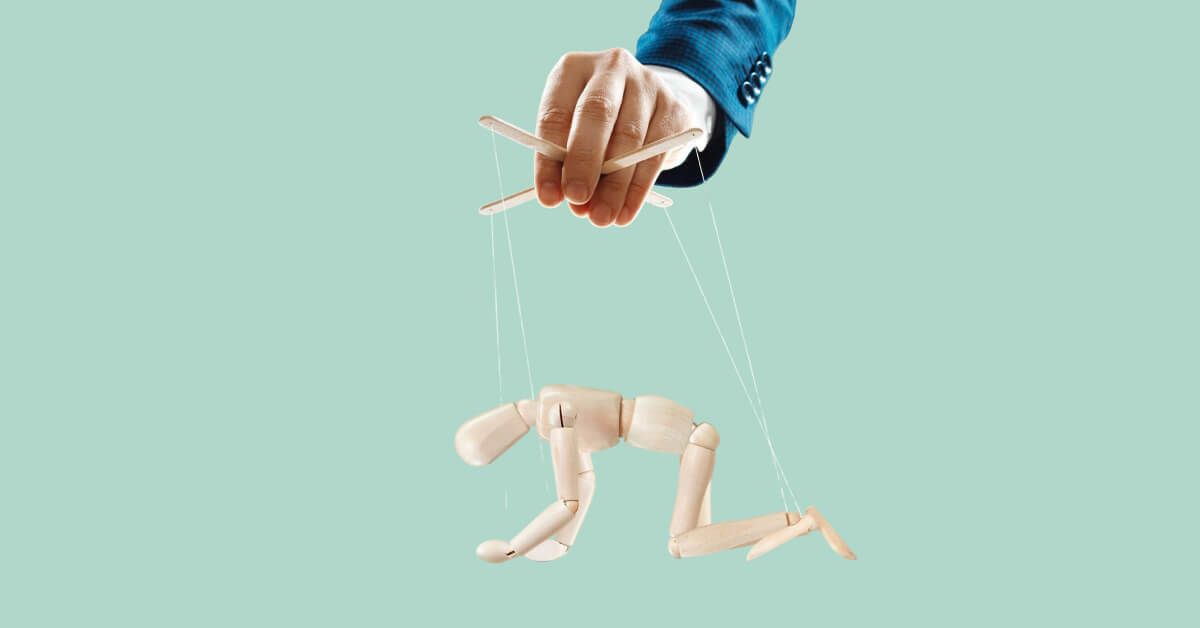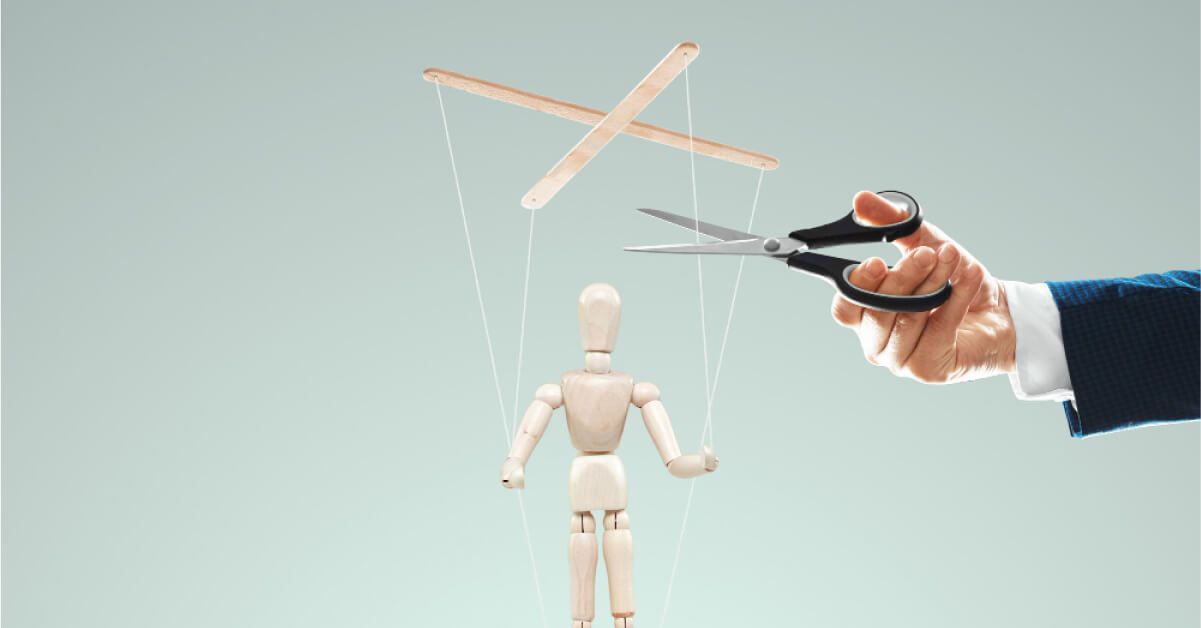Microaggressions at work aren’t always obvious—but they’re always harmful

Picture this: you're wearing brand-new shoes. At first, they felt fine. But as the day goes on, you notice a tiny pebble stuck inside.
It’s small, barely noticeable, but with every step, it pokes at you, over and over again. Annoying, right? Now imagine that pebble never leaves your shoe. Day after day, it keeps jabbing you, making what should be a normal walk feel like a tiring journey.
That’s exactly how microaggressions at work feel. Small comments, offhand work jokes, or subtle actions that might seem harmless at first glance, but they build up. For the person on the receiving end, it chips away at their sense of belonging, focus, and well-being.
Left unchecked, these micro-moments can quietly corrode even the most inclusive workplaces. So, if we want to create environments where everyone can walk confidently, without pebbles in their shoes, it’s time to talk about microaggressions at work.
What are microaggressions?

Microaggressions are subtle, often unintentional comments, actions, or behaviors that communicate bias or exclusion toward individuals based on their identity—be it race, gender, age, ability, or background. Unlike overt discrimination, microaggressions are typically disguised as offhand remarks or “harmless” jokes.
Understanding the signs of microaggression in workplace settings is crucial. These might include being constantly interrupted in meetings, receiving backhanded compliments like “You’re surprisingly articulate,” or noticing that your input is routinely ignored or minimized. These patterns, though subtle, can chip away at morale and confidence.
There are various types of microaggressions at work, such as verbal (e.g., stereotypical remarks), behavioral (e.g., avoiding eye contact), and environmental (e.g., lack of representation in leadership). All of these contribute to a culture that may feel unwelcoming to marginalized groups.
When these incidents occur, reporting microaggressions to HR becomes an important step in addressing and correcting the behavior. Employers must create an environment where employees feel safe bringing up concerns without fear of backlash. Education, awareness, and proactive HR policies are key to eliminating microaggressions and fostering a truly inclusive workplace.
What are the types of microaggressions?

Now that we have a grasp on what microaggressions are let's explore the different types that can sneak their way into our professional lives. Buckle up because we're about to uncover the nuances of these sneaky culprits.
- Verbal microaggressions: Verbal work microaggressions show up as subtle slights or comments masked as compliments. Saying things like, "You're so articulate for someone like you," reveals deeper bias. These remarks can be especially harmful when addressing mental health or ethnicity. They remain one of the most common examples of microaggression in the office.
- Nonverbal microaggressions: Not all workplace microaggressions are spoken—some are shown through body language. Eye-rolls, dismissive gestures, or constant interruptions subtly exclude people. These cues send a message that some voices matter less. Nonverbal behaviors are often overlooked examples of microaggression.
- Environmental microaggressions: Microaggressions workplace culture can be shaped by what’s missing or neglected. Lack of diversity in leadership or policy gaps signal exclusion. Unequal access to opportunities can speak louder than words. These are embedded work microaggressions that harm inclusion long-term.
- Assumption-based microaggressions: Ever been judged before speaking? That’s the danger of assumptions. Assuming a mother lacks ambition, or guessing someone’s sexuality—these sting. These workplace microaggressions box people into stereotypes without understanding their reality. They reflect exactly what are micro agressions rooted in bias.
- Backhanded compliments: They sound nice—until you listen closely. “You’re so good for someone your age” isn’t really praise. These are subtle digs wrapped in flattery that reinforce bias. Classic examples of microaggression that chip away at confidence.
- Color-blind microaggressions: Claiming “I don’t see color” may feel inclusive, but it’s not. It erases lived experiences tied to race and ethnicity. These workplace microaggressions dismiss identity in the name of neutrality. It’s a textbook case of what are micro agressions in disguise.
- Stereotyping by association: Judging someone by their affiliations is another form of bias. Assuming tech skills because a sibling’s in tech, or athleticism via a team. These microaggressions workplace scenarios ignore individual identity and merit. They seem harmless but are problematic examples of microaggression.
- Tokenization: “Let’s ask our only woman for input”—that’s tokenization in action. It reduces someone’s role to a checkbox of identity. This form of work microaggressions places unfair pressure on individuals. It’s one of the most frustrating microaggressions workplace dynamics.
Causes of microaggressions in the workplace
Microaggressions don’t come out of nowhere—they are rooted in deeper societal and psychological factors that influence our everyday behavior. Understanding the causes of microaggressions is the first step in breaking the cycle.
- Implicit bias: One of the primary causes of common microaggressions in the workplace is implicit bias. These are unconscious attitudes or stereotypes that influence our decisions and interactions without us even realizing it—leading to biased comments or actions toward certain groups.
- Stereotype reinforcement: Media, culture, and upbringing all contribute to the reinforcement of stereotypes. When these stereotypes are internalized, they show up in microaggressions like assuming a woman isn’t technical or a person of color is less articulate.
- Lack of exposure to diversity: People who haven’t been exposed to diverse communities may unintentionally commit microaggressions due to ignorance or unfamiliarity. This often results in awkward or offensive comments that others find hurtful or exclusionary.
- Poor communication habits: Sometimes, microaggressions stem from poor communication—like interrupting someone constantly or offering backhanded compliments. These behaviors may seem small, but over time, they contribute to the effects of microaggression, including lower morale and feelings of exclusion.
- Organizational culture: When companies don’t prioritize inclusivity, microaggressions can become normalized. For those dealing with microaggression as an employee, it often feels like speaking up won’t change anything, creating a cycle of silence and harm.
How microaggressions differ across race, gender, age, and ability
Microaggressions at work aren’t harmless slip-ups—they’re everyday expressions of deep-rooted bias. No matter who they target, the harm they cause is real and lasting.
| Category | Common microaggressions | Workplace impact |
|---|---|---|
| Race | “Where are you really from?” or assumptions about language skills or background. | Reinforces “outsider” status, undermines inclusion. A common microaggression in workplace diversity efforts. |
| Gender | Interrupting women in meetings or assuming a man is the leader in mixed groups. | Affects confidence, credibility, and advancement. These microaggressions in the workplace reflect gender bias. |
| Age | “You’re too young to lead” or “Aren’t you close to retirement?” | Both young and older workers face stereotype-based microaggressions. It impacts trust and respect. |
| Ability | Speaking louder to someone with a visible disability or excluding them from projects. | These nonverbal microaggressions in the workplace send harmful messages about capability. |
- Quick note: Microaggressions don’t look the same for everyone. What’s subtle to one may feel sharp to another. Understanding the nuances of microaggression in the workplace helps build empathy and inclusion.
- Need to respond? Learning how to deal with microaggression in the workplace starts with naming them. Only then can we shift from harm to healing. Empower your culture by calling out the quiet biases that divide us.
35+ Examples of workplace microaggressions
Understanding microaggression examples at work is key to fostering a respectful, inclusive environment. These subtle behaviors often go unchecked but can deeply affect morale, performance, and retention. Here are 35+ detailed microaggression examples in the workplace, categorized by context, with clear explanations of why they’re problematic.
Racial microaggressions
- “Where are you really from?”: Implies that the person is not truly part of the organization or country, reinforcing the idea that they don’t belong.
- “You speak English so well!”: Suggests surprise that someone from a certain background is articulate, revealing hidden bias.
- “You’re not like other Black/Asian people I know.”: Reinforces stereotypes by creating a “favorable exception,” which is still rooted in bias.
- “Can I touch your hair?”: Treats someone as exotic or different, objectifying personal features tied to racial identity.
- “You people are always so passionate.”: Generalizes an entire racial group’s behavior, reducing individuality.
- “You’re basically white on the inside.” : Invalidates cultural identity as a compliment.
- “You’re lucky; companies are hiring more people like you now.” : Implies diversity over merit.
- “Is that your real name?” : Questions ethnic names, suggesting they’re unusual or inconvenient.
Gender-based microaggressions
- “You’re too emotional for this role.”: Dismisses valid emotions as a weakness, typically targeting women.
- “Are you sure you can handle this? It’s technical.”: Undermines competence based on gender assumptions.
- “You’re so pretty, you don’t need to work this hard.”: Sexualizes appearance and minimizes professional effort.
- “He’s confident; she’s aggressive.”: Shows double standards by labeling identical behavior differently for men and women.
- “Can you take notes? You’re more organized.”: Assumes stereotypical gender roles in team dynamics.
- “You only got this role to meet the gender quota.”: Questions competence.
- “You should smile more.”: Polices women’s expressions unnecessarily.
- “You don’t dress like a woman in your position should.:– Enforces sexist dress expectations.
Age-based microaggressions
- “You’re too young to understand.”: Dismisses a younger employee’s insight or capability unfairly.
- “You’re too old to pick up new tech.”: Reinforces the stereotype that older professionals are less adaptable.
- “You’re a millennial; you must need constant praise.”: Generalizes based on age, ignoring individuality.
- “Boomers just don’t get it.”: Alienates older employees and fosters generational division.
- “You still work? That’s impressive.”: Sounds complimentary but implies older professionals don’t belong in the workforce.
- “This is a fast-paced environment—you sure you’re up for it?”: Questions older employees' energy.
- “We need fresh blood for this project.”: Ageist code for excluding older workers.
- “You’ll understand once you’re older.”: Patronizing and invalidating younger professionals’ views.
Disability and mental health microaggressions
- “You don’t look disabled.”: Invalidates invisible disabilities and questions someone's lived experience.
- “You’re being too sensitive.”: Dismisses emotional responses that may be tied to legitimate mental health needs.
- “We all have bad days—just push through.”: Minimizes serious conditions like anxiety or depression.
- “Let’s skip the captions—you can hear, right?”: Assumes everyone processes information the same way, excluding some.
- “Don’t let your OCD mess with the project.”: Trivializes a mental health condition as a personality quirk.
- “At least it’s not something serious.”: Minimizes chronic conditions or anxiety.
- “Everyone’s a little ADHD.” – Trivializes neurodiverse conditions.
- “You’re so inspiring for working with your condition.”: Overpraises basic functioning, reinforcing difference.
- “Are you off your meds today?”: Used as a joke but deeply stigmatizing.
LGBTQIA+ microaggressions
- “You don’t seem gay.”: Assumes there’s a “correct” way to present sexual orientation.
- “Which one of you is the man in the relationship?”: Enforces heterosexual gender norms onto same-sex couples.
- “I don’t have a problem with gay people—as long as they don’t flaunt it.”: Accepts identity only under conditions of silence or invisibility.
- “I knew you were gay!”: Reduces identity to stereotypes and makes it the subject of gossip.
- “Do you have to make everything about being queer?”: Minimizes the importance of lived experiences and suggests discomfort with authenticity.
- “You’re too pretty to be a lesbian.”: Sexualizes and invalidates orientation.
- “Bisexuals are just confused.”: Dismisses valid sexual orientations.
- “I don’t care what you are—as long as you keep it to yourself.”: Tolerance framed as silence.
How to prevent microaggression in the workplace training?
Have you ever wished you could proactively prevent microaggressions in your workplace rather than just addressing them afterwards? Well, let's explore five pointers for preventing microaggressions through effective workplace training.
- Start with education: The first step in preventing microaggressions is education. Equip your employees with a deep understanding of what microaggressions are and how they can manifest. Use real-world examples and case studies to make it relatable.
- Promote inclusivity from day one: Incorporate inclusivity training into your onboarding process. New employees should understand your organization's commitment to a respectful and inclusive workplace from the get-go. Set the tone for their entire tenure.
- Practice active bystander training: Teach employees how to be active bystanders. Encourage them to intervene when they witness microaggressions, ensuring that everyone plays a role in maintaining a respectful environment.
- Encourage self-reflection: Create space for self-reflection. Help employees recognize their own biases and prejudices. Training sessions that encourage introspection can lead to lasting change in behavior.
- Ongoing reinforcement: Preventing microaggressions is an ongoing process. Conduct regular training sessions, refreshers, and workshops to reinforce the importance of a respectful workplace culture. Use real-life scenarios and role-playing to make it practical.
Risks and challenges of confronting microaggressions
Calling out microaggressions isn’t like delivering a dramatic monologue in Suits—in real life, there’s no script, and the stakes are much higher. Addressing bias at work can be uncomfortable, risky, and emotionally taxing. Still, staying silent only reinforces harmful behavior. Here's why speaking up is harder than it looks.
- Fear of retaliation: Many hesitate to confront examples of microaggressions in the workplace out of concern for how it might impact their job, relationships, or reputation. Retaliation, subtle or not, is a real threat.
- Emotional drain: It takes energy to explain the harm caused, especially when others don’t understand the microaggression meaning. For marginalized employees, doing this repeatedly becomes a heavy burden.
- Being dismissed or misunderstood: You risk being told you’re “too sensitive” or that “it wasn’t meant that way.” These responses ignore the true microaggression definition and invalidate the experience altogether.
- Lack of backup: When no one else speaks up, it can feel like you’re alone against the system. Without allyship or leadership support, even the best way to stop microaggressions can fall flat.
- Structural roadblocks: Without proper training or inclusive systems in place, there’s no clear process for addressing these issues. When no one defines or enforces boundaries, the behavior thrives unchecked.
How remote teams experience microaggressions over Slack, email, and video
In remote work environments, microaggressions haven’t disappeared—they’ve just evolved. The absence of physical cues and casual conversations can sometimes amplify biases in digital communication. Let’s explore how work microaggressions show up in virtual settings and what you can do about them.
- Subtle exclusion in group chats: Excluding certain team members from group Slack threads or not tagging them in relevant messages can be a form of digital microaggression. It signals that their input isn’t needed or valued—especially if it happens repeatedly.
- Ignoring or delaying responses: Consistently ignoring someone’s emails or delaying replies without justification can be perceived as a microaggression, particularly when it’s targeted toward underrepresented groups. This pattern contributes to feelings of isolation and disrespect.
- Tone and punctuation in messages: The tone in written communication matters. Short, curt replies (e.g., “fine” or “sure.”) without context may come off as dismissive, especially when not used uniformly across team members. Recognizing and addressing micro-behaviors in the workplace begins with being mindful of how messages are framed.
- Talking over people on video calls: In meetings, interrupting or talking over colleagues, especially women, junior staff, or people from marginalized groups—is a common microaggression. Remote video calls don’t exempt us from active listening and respectful dialogue.
- Addressing microaggressions in the workplace virtually: When dealing with microaggressions in digital formats, it’s crucial to address them with the same seriousness as in-person interactions. Managers must create space for open feedback and normalize conversations around inclusion, even when teams are remote.
Microaggressions in the workplace statistics

- Fortune Magazine reports that 68% of U.S. workers view microaggressions as a significant issue in the workplace.
- According to Forbes, 36% of women have experienced their expertise being questioned, compared to 27% of men.
- Gallup's findings reveal that 24% of African American women and 24% of Hispanic employees in the U.S. have reported workplace discrimination within the past year.
- Nasdaq's data indicates that 61% of employees have observed instances of discrimination targeting others, whether in their current or previous workplaces.
- Harvard Public Health's research highlights that 57% of black Americans have encountered pay and promotion discrimination, while 31% of women report gender microaggressions during job applications.
How do you spot microaggressions in the workplace?
Spotting microaggressions in the workplace isn’t always easy. They often show up in everyday conversations, body language, or workplace decisions. Recognizing them requires awareness, empathy, and a deeper understanding of behavioral patterns that may seem normal on the surface. Here are key ways to identify microaggressions in a professional setting:
- Emotional discomfort or “gut feelings”: If a comment or action consistently leaves you or others feeling uncomfortable, excluded, or disrespected—especially after seemingly small interactions—it could be a sign of a microaggression in workplace dynamics. Trust your instincts and take note.
- Repeated dismissals or interruptions: Microaggressions often show up in patterns. Being constantly interrupted in meetings, having your ideas overlooked, or being talked over—particularly if you're from a marginalized group—can signal deeper biases at play.
- Identity-based singling out: Calling attention to someone’s race, gender, age, or background in unrelated conversations (e.g., “You people are always so passionate”) is a clear red flag. This reinforces "otherness" and is a common tactic of work microaggressions.
- Assumptive language and stereotypes: Watch for phrases that begin with “You must be…” or “I didn’t expect you to…” These are often rooted in assumptions and can reflect deeply ingrained societal biases—especially when tied to roles, skills, or communication styles.
- Nonverbal cues: Nonverbal microaggressions in the workplace—like eye-rolling, sighing, or consistently avoiding someone’s input—can be just as harmful as verbal ones. These signals often go unnoticed but contribute to a culture of exclusion.
How to recognize your own microaggressions?
Recognizing your own microaggressions isn’t about being perfect,it’s about being aware. Even lovable characters like Michael Scott in The Office taught us that good intentions don’t erase impact. The truth is, microaggressions in the workplace often show up subtly, and learning to spot them is the first step toward real change.
- Notice discomfort in others: If someone goes quiet or tenses up, your words might’ve crossed a line. These moments often signal workplace microaggressions, especially when repeated.
- Reconsider “harmless” humor: Jokes like “You’re too pretty to be in tech” seem lighthearted but are common examples of microaggression. Intent doesn’t erase bias.
- Challenge your assumptions: Thinking someone’s too old to adapt or too young to lead reflects work microaggressions. Ask yourself: Am I reacting to the person or the stereotype?
- Rethink your compliments: Saying “You’re so articulate” to someone from a minority group might seem nice, but it’s a backhanded microaggression in the workplace.
- Pay attention to body language: Nonverbal microaggressions in the workplace—like side-eyes, interrupting, or excluding others—carry just as much weight as words.
- Accept feedback without defensiveness: If someone points out a microaggression in workplace behavior, listen. Growth comes from understanding what are micro agressions, not denying them.
How managers can address microaggressions in the workplace?

Ever had that feeling when you walk into the office, and something just doesn't feel right? Microaggressions might be lurking in your workplace, and as a manager, you must address them head-on. So, let's dive into how you can be the change-maker your team needs!
- Educate yourself first: Before you can lead your team towards change, you need to understand what microaggressions are. These are subtle, often unintentional, discriminatory behaviors that can make your employees feel marginalized.
- Create a safe space: Make sure your employees know that you're approachable and genuinely care about their concerns. Encourage open dialogues and emphasize that it's safe to report microaggressions without fear of retaliation.
- Lead by example: Demonstrate the behavior you want to see in your team. Avoid making insensitive remarks or engaging in microaggressions yourself. Your actions set the tone for the workplace.
- Training and workshops: Offer regular training and workshops on diversity, equity, and inclusion. These sessions can help your team understand the impact of ethnic microaggressions or any sort and how to avoid them.
- Clear reporting procedures: Establish a clear procedure for reporting microaggressions. Ensure that employees know how to report incidents and that their complaints will be taken seriously and handled confidentially.
- Address issues swiftly: When a microaggression is reported, don't sweep it under the rug. Address it promptly, investigate the matter, and take appropriate action. This sends a powerful message that you're committed to creating a respectful workplace.
- Promote allyship: Encourage employees to be allies to their marginalized colleagues. Foster a sense of community and support within your team. Allies can help amplify the voices of those affected by microaggressions.
- Measure progress: Regularly assess the effectiveness of your efforts. Are incidents decreasing? Is the workplace culture improving? Use surveys and feedback to gauge progress.
- Foster cultural competence: Provide resources and training to help managers and employees develop cultural competence, including an understanding of different cultural norms, communication styles, and perspectives. This can help prevent misunderstandings and reduce the likelihood of unintentional microaggressions.
- Address systemic issues: Recognize that microaggressions often stem from deeper systemic issues within the organization. Take proactive steps to address these underlying issues, such as biases in hiring and promotion processes, unequal access to opportunities, or disparities in treatment.
- Encourage bystander intervention: Empower employees to speak up and intervene when they witness microaggressions occurring in the workplace. Provide guidance on how to effectively address and challenge inappropriate behavior while maintaining professionalism and respect.
- Provide ongoing support: Offer support resources for employees who have experienced or witnessed microaggressions, such as counseling services, employee assistance programs, or affinity groups where individuals can connect with others who share similar experiences.
- Incorporate diverse perspectives: Ensure that decision-making processes, team meetings, and company policies reflect diverse perspectives and voices. Encourage input from employees of all backgrounds and actively seek out diverse viewpoints to inform decision-making.
- Hold individuals accountable: Hold individuals accountable for their actions, regardless of their position or tenure within the organization. Clearly communicate expectations regarding respectful behavior and the consequences of violating company policies related to discrimination and harassment.
- Cultivate a culture of empathy: Promote empathy and understanding among employees by fostering an environment where individuals actively listen to and seek to understand each other's experiences, perspectives, and challenges. Encourage empathy-building exercises and discussions to promote mutual respect and empathy.
- Celebrate inclusive wins: Recognize and celebrate when teams make progress in creating an inclusive space, whether it's launching a new DEI initiative or handling a tough conversation with care. Highlighting these moments reinforces positive change.
- Revisit company values regularly: Don’t let your values gather dust on a wall. Tie conversations about microaggressions in the workplace back to your core values in team meetings, performance reviews, and onboarding sessions.
- Use inclusive language in communication: Review internal emails, handbooks, and meeting scripts to eliminate bias or exclusionary terms. Even minor word choices can subtly reflect microaggression meaning—changing them is a small act with big impact.
- Encourage anonymous feedback channels: Sometimes, the fear of being identified prevents people from reporting issues. An anonymous option gives everyone a voice and allows you to track patterns and examples of microaggression across teams.
- Set diversity goals—and track them: Whether it’s more diverse leadership or increased cultural competency training, set measurable goals. It shows your commitment to moving from awareness to action and helps reduce work microaggressions at scale.
Nonverbal microaggressions as workplace discrimination

Nonverbal microaggressions in the workplace are subtle actions, gestures, or expressions that convey bias or exclusion without the use of explicit language. These nonverbal cues can still have a significant impact on individuals' happiness and sense of belonging. Here are some common examples of nonverbal microaggressions:
- Eye-rolling or dismissive gestures when a coworker speaks or shares an idea.
- Interrupting or talking over someone during meetings or discussions.
- Exclusionary body language, such as turning away, crossing arms, or avoiding eye contact.
- Using facial expressions or tones that convey subtle disrespect, condescension, or disbelief.
- Unequal allocation of physical space, such as consistently taking up more room or crowding out others.
To curb nonverbal microaggressions in the workplace, consider the following strategies:
- Foster awareness: Encourage employees to reflect on their own nonverbal behaviors and biases. Education and training on nonverbal communication and its impact can promote self-awareness and empathy.
- Promote active listening: Create a culture of active listening, where individuals genuinely engage with and respond to others' ideas and perspectives. Encourage turn-taking and discourage interrupting or talking over colleagues.
- Lead by example: Managers and leaders should model inclusive nonverbal behaviors, such as maintaining open body language, making eye contact, and providing equal opportunities for participation.
- Establish inclusive norms: Set clear expectations for respectful communication and collaboration. Emphasize the importance of creating an environment where everyone's voice is valued and where nonverbal cues are consciously considered.
- Encourage feedback and reporting: Provide channels for employees to share their experiences, including instances of nonverbal microaggressions. Create a safe reporting mechanism where concerns can be addressed confidentially and without fear of retaliation.
- Provide training and resources: Offer workshops or resources that specifically address nonverbal communication and its impact on inclusivity. This can help employees develop a better understanding of how their nonverbal behaviors can influence others and provide strategies for improvement.
Impact of microaggressions in the workplace

Have you ever had that nagging feeling that something isn't quite right in your workplace? Microaggressions might be the culprit. These seemingly small, subtle, and often unintentional slights can have a profound impact on individuals and workplace dynamics.
Let's uncover the hidden harm and explore the key pointers on the impact of microaggressions in the workplace.
- Reduced job satisfaction: Employees who experience microaggressions are more likely to feel dissatisfied with their jobs, leading to decreased productivity and engagement.
- Impaired performance: Microaggressions can hinder an individual's ability to perform their best, affecting personal and organizational success.
- Stifled creativity: Microaggressions can inhibit creativity and innovation, as individuals may hesitate to share their unique perspectives.
- Disrupted team dynamics: Team dynamics suffer when microaggressions go unaddressed. It can create tension, division, and hinder collaboration.
- Communication breakdowns: Microaggressions erode trust and effective communication, making it difficult for teams to work cohesively.
- Health impact: Chronic exposure to microaggressions has been linked to physical health issues, including increased blood pressure and heart problems.
- Impact on marginalized groups: Marginalized groups often bear the brunt of microaggressions, leading to a person's feelings of exclusion and isolation.
- Missed opportunities: Microaggressions can hinder career advancement opportunities for affected employees, limiting their professional growth.
- Legal consequences: In some cases, repeated microaggressions can lead to legal consequences, as they may be considered workplace harassment or discrimination.
- Organizational reputation: Workplaces that allow microaggressions to persist risk damaging their reputation as an inclusive and diverse employer.
- Lost talent: Failure to address microaggressions can result in the loss of valuable talent, as individuals seek environments where they are respected and valued.
Dealing with microaggression as an employee

Self-defense response
When faced with a microaggression or everyday racism, it's essential to stand up for yourself. A self-defense response involves assertively addressing the issue without being confrontational. Here's how:
- Stay calm: Take a deep breath and maintain your composure. Reacting with anger can escalate the situation.
- Be direct: Politely and confidently express how the comment or action made you feel. For example, "I felt uncomfortable when you said that."
- Seek clarification: Sometimes, microaggressions are unintentional. Ask for clarification to give the person a chance to explain themselves. It might be a misunderstanding.
- Set boundaries: Firmly state that you expect respectful treatment. Say, "I'd appreciate it if you could refrain from making comments like that in the future."
Contrite response
In some cases, the person responsible for the microaggression might genuinely not realize the impact of their words or actions. A contrite response involves fostering understanding and empathy:
- Choose the right moment: Find an appropriate time to address the issue privately with the individual. Express your feelings calmly and honestly.
- Use "I" statements: Frame your concerns as your personal experience to avoid sounding accusatory. For example, "I felt hurt when I heard your comment."
- Encourage dialogue: Encourage an open conversation where the person can ask questions and learn from your perspective. This approach can lead to increased awareness and change.
Make consequences clear
If microaggressions persist, it's vital to make the consequences clear, both for the individual and your organization. This ensures accountability:
- Document incidents: Keep a record of each microaggression, including dates, times, locations, and witnesses if possible. Documentation can be essential if the issue escalates.
- Speak to HR: If addressing the issue directly doesn't resolve the problem, involve your human resources department. Share your documentation and express your concerns.
- Know your rights: Familiarize yourself with your organization's policies on discrimination, harassment, and microaggressions. Understanding your rights can empower you.
How does ignoring microaggressions lead to employee turnover?

Failure to properly address microaggressions in the workplace can indeed contribute to employee turnover. Here's how:
- Decreased job satisfaction: Experiencing microaggressions on an ongoing basis can erode an employee's job contentment at their job. When individuals consistently feel undervalued, disrespected, or marginalized, their overall happiness and engagement in their work can decline.
- Negative impact on mental health: Microaggressions can take a toll on employees' mental health and physical health. The cumulative effect of these subtle acts of discrimination can lead to increased stress, anxiety, and feelings of alienation, which can significantly impact an individual's ability to thrive in their role.
- Reduced sense of belonging: Microaggressions can create an unwelcoming and exclusionary environment, making employees feel like they don't truly belong. This lack of inclusion and belonging can result in employees feeling disconnected from their team, organization, or overall company culture.
- Damaged relationships and teamwork: Microaggressions can strain relationships and teamwork within the workplace. When individuals experience or witness microaggressions, it can lead to interpersonal conflicts, decreased trust, and hindered collaboration. This can negatively impact productivity and the overall effectiveness of a team.
- Talent attrition: Employees who consistently face microaggressions may seek alternative work environments where they feel more respected and valued. If the organization fails to address these issues, talented individuals may choose to leave, resulting in a loss of valuable skills and knowledge.
- Negative employer reputation: Word spreads quickly, and if an organization gains a reputation for allowing or dismissing microaggressions, it can deter potential candidates from seeking employment with them. A poor reputation in terms of inclusivity and diversity can harm the organization's ability to attract and retain top talent.
How pulse surveys & anonymous feedback uncover microaggressions early
Microaggressions often go unreported because they’re subtle and difficult to address directly. That’s where tools like pulse surveys and anonymous feedback come in—they offer a proactive way to surface concerns before they escalate. Here’s how these methods help organizations identify and resolve cultural issues early on.
- Creating a safe channel for honesty: Anonymous feedback removes the fear of retaliation or judgment, encouraging employees to speak up about their experiences with microaggressions or workplace bias.
- Identifying trends and patterns: Pulse surveys allow HR teams to gather real-time data. By analyzing patterns across departments or demographics, organizations can pinpoint areas where microaggressions may be more frequent.
- Improving response time: Early detection through regular check-ins means issues can be addressed before they damage team morale, productivity, or retention.
- Driving inclusive policy changes: When recurring themes emerge, leadership can use this feedback to inform training programs, improve communication protocols, or revise company policies.
- Boosting employee trust and engagement: Knowing there’s a system in place that listens and acts builds psychological safety. Employees feel more valued and supported in a culture that takes feedback seriously.
Conclusion
Microaggressions may be subtle, but their impact is anything but. They can quietly erode confidence, strain team relationships, and create an undercurrent of exclusion that affects overall morale and retention. As leaders, it's not enough to say we support inclusion—we need to actively create environments where everyone feels seen, heard, and respected.
Addressing microaggressions in the workplace is a crucial step toward building that kind of culture. But spotting them isn’t always easy. That’s when CultureMonkey steps in to bridge the gap between silence and action. With real-time pulse surveys, anonymous feedback surveys, and powerful analytics, CultureMonkey helps you detect hidden biases and workplace microaggressions before they turn into larger issues.
You get honest, actionable insights directly from your people—giving you the chance to intervene early, foster empathy, and make informed changes. It’s not just about preventing harm—it’s about promoting a culture where psychological safety thrives and every voice counts.
FAQs
1. What is the impact of microaggressions on individuals?
Microaggressions can have a significant impact on individuals, contributing to feelings of marginalization, invalidation, and stress. Repeated exposure to microaggressions can erode self-esteem, negatively affect mental health, and hinder productivity in the workplace. Recognizing and addressing microaggressions is essential for fostering inclusivity and cultivating a supportive environment.
2. Are microaggressions intentional?
Microaggressions in the workplace are often unintentional, stemming from implicit biases and ingrained stereotypes rather than malicious intent. These subtle, unconscious behaviors or remarks may result from a lack of awareness or understanding of their impact on others. Regardless of intent, microaggressions can cause harm and contribute to a hostile or unwelcoming work environment.
3. How can I address a microaggression without causing conflict?
Begin by privately discussing the issue with the individual, emphasizing the impact of their behavior on you or others. Use "I" statements to express your feelings and provide specific examples to illustrate the microaggression. Approach the conversation with empathy and a willingness to educate rather than blame, fostering a constructive dialogue aimed at promoting understanding and change.
4. Can bystanders play a role in addressing microaggressions?
Bystanders in the workplace can play a crucial role in addressing microaggressions by speaking up and offering support to the target of the microaggression. They can intervene by calmly addressing the situation, redirecting the conversation, or providing comfort to the affected individual. Bystander intervention sends a powerful message that such behavior is not acceptable and promotes a culture of inclusivity.
5. How can organizations promote awareness and prevent microaggressions?
Organizations can promote awareness and prevent microaggressions by implementing diversity and inclusion training programs that address unconscious biases, cultural competence, and respectful communication. Fostering open dialogue and creating channels for reporting and addressing microaggressions can encourage accountability and support victims.
6. What’s the difference between a microaggression and harassment?
Microaggressions are subtle, often unintentional slights or behaviors rooted in bias, while harassment is more overt, repeated, and hostile conduct. Microaggressions may seem minor but can build up over time and cause harm. Harassment, on the other hand, is typically easier to identify and may violate workplace policies or legal standards due to its severity.
7. How can leaders avoid committing unintentional microaggressions?
Leaders can avoid unintentional microaggressions by practicing active listening, engaging in bias training, and seeking diverse perspectives. It’s important to think before speaking, avoid assumptions, and stay open to feedback. Creating a culture of continuous learning and empathy helps leaders to become more aware of how their words or actions may impact others, even unintentionally.
8. How can leaders avoid committing unintentional microaggressions?
Leaders can avoid unintentional microaggressions by practicing active listening, engaging in bias training, and actively seeking diverse perspectives. It’s important to think before speaking, avoid assumptions, and stay open to feedback. Creating a culture of continuous learning and empathy helps leaders become more aware of how their words or actions may impact others, even unintentionally.
9. How should an HR team address repeat offenders of microaggressions?
HR should document incidents, conduct confidential investigations, and provide targeted coaching or training for the offender. If behavior continues, progressive disciplinary actions may be necessary. It's crucial to set clear expectations, reinforce company values, and ensure accountability. Creating a safe space for reporting and offering support to affected employees is equally important for long-term cultural change.
10. Why is addressing microaggressions important for company culture?
Addressing microaggressions is essential for fostering psychological safety, inclusivity, and employee well-being. Left unchecked, they can lead to disengagement, higher turnover, and a toxic work environment. A culture that actively identifies and corrects microaggressions shows commitment to equity and respect—boosting trust, collaboration, and long-term retention across diverse teams. Inclusion isn’t a trend—it’s a leadership responsibility.



